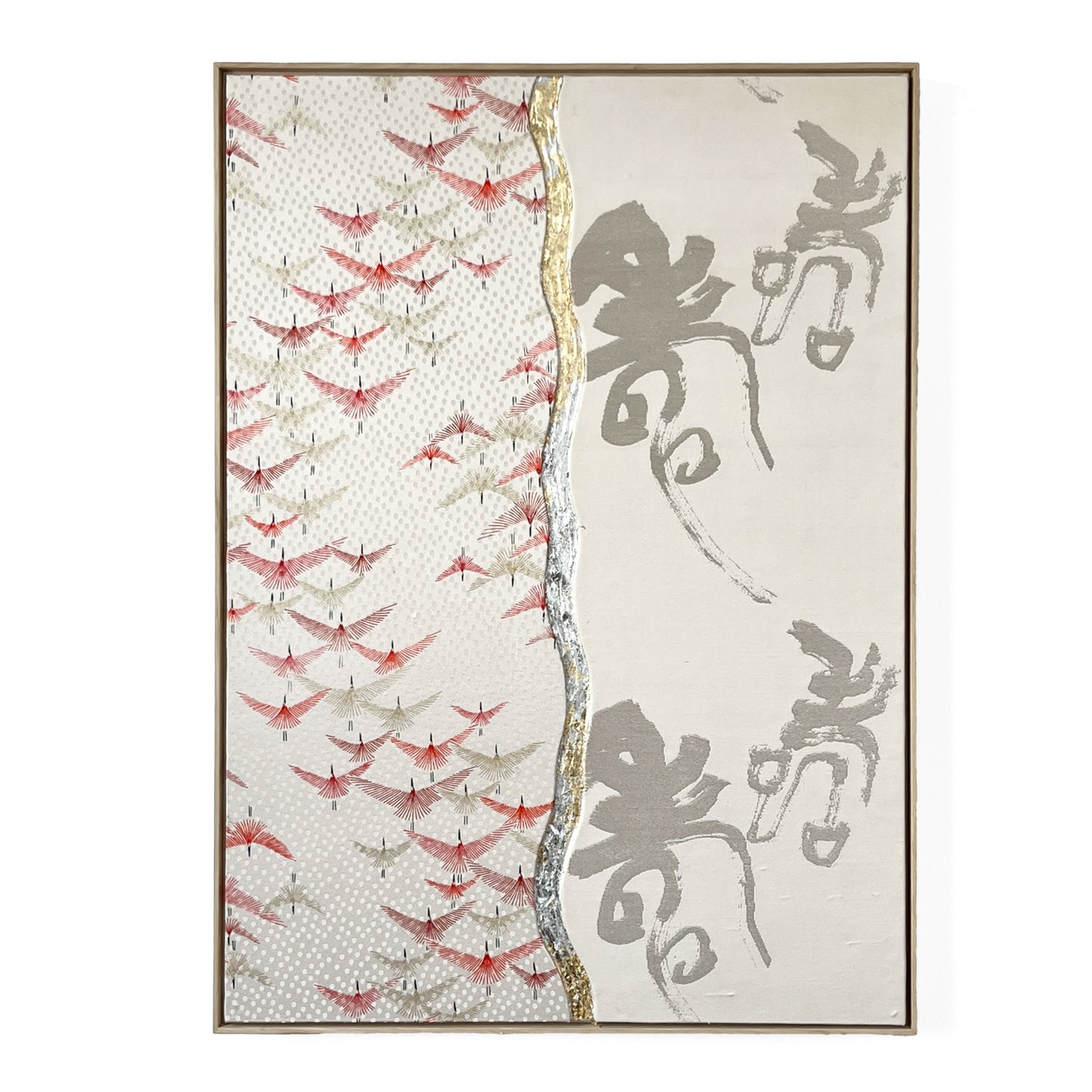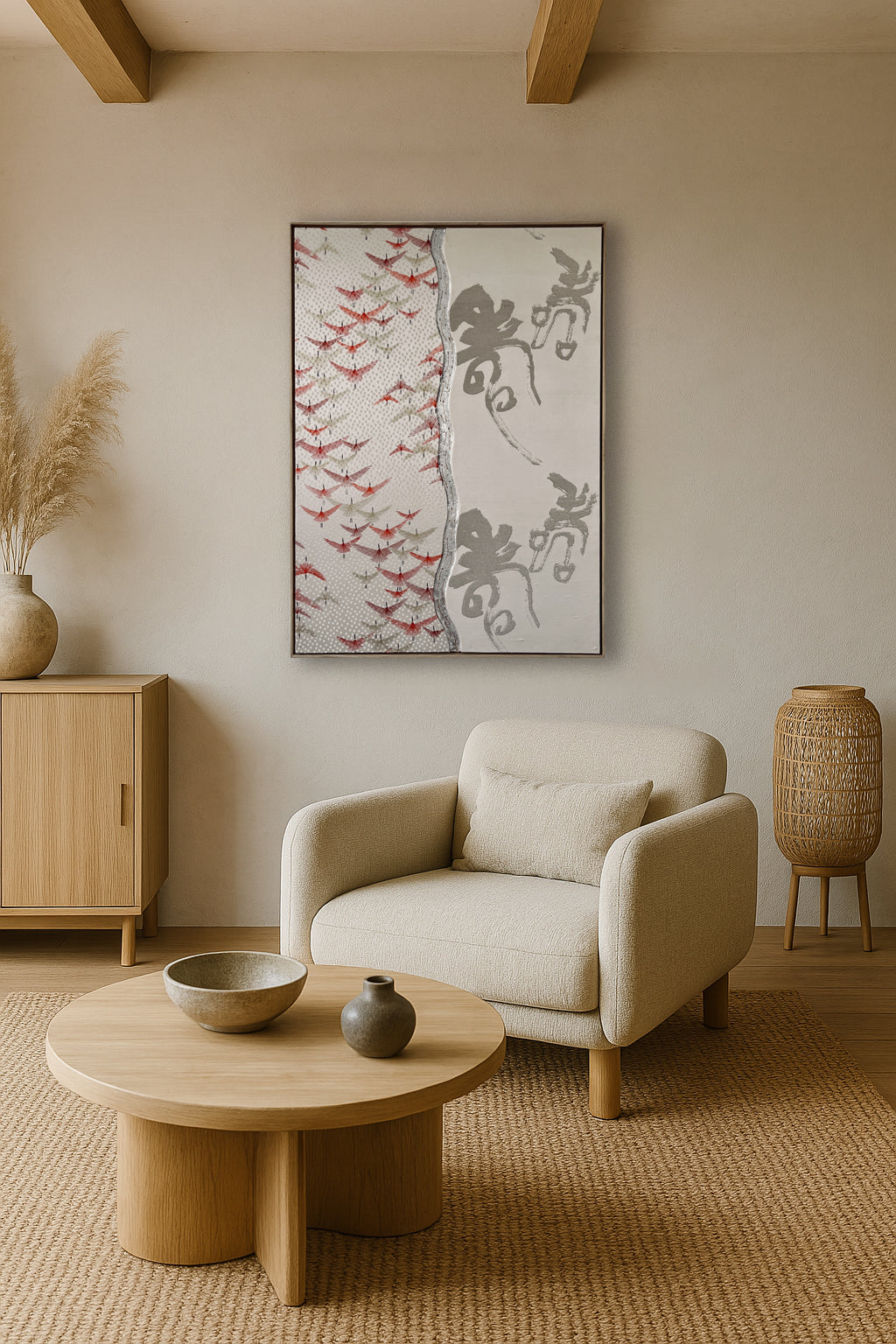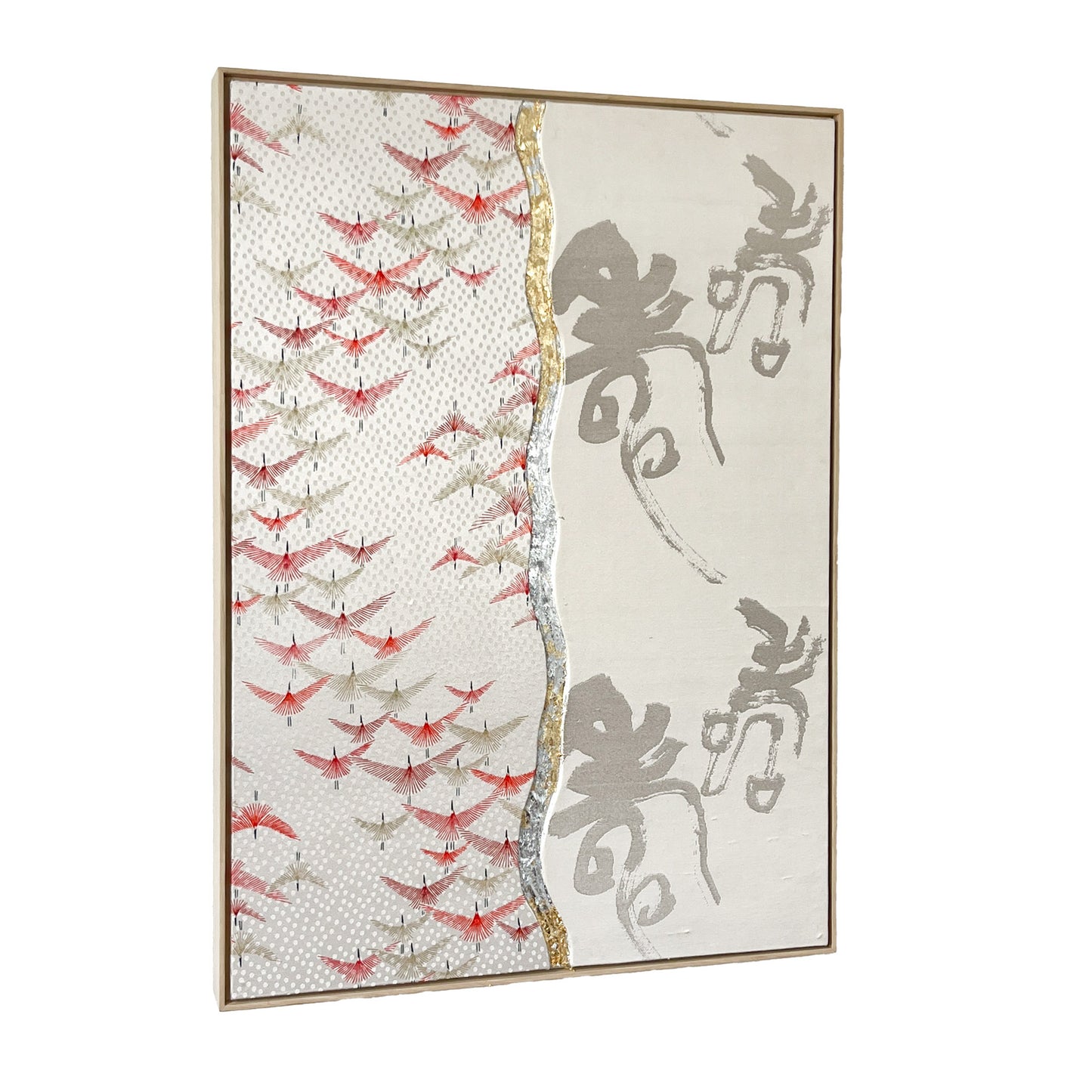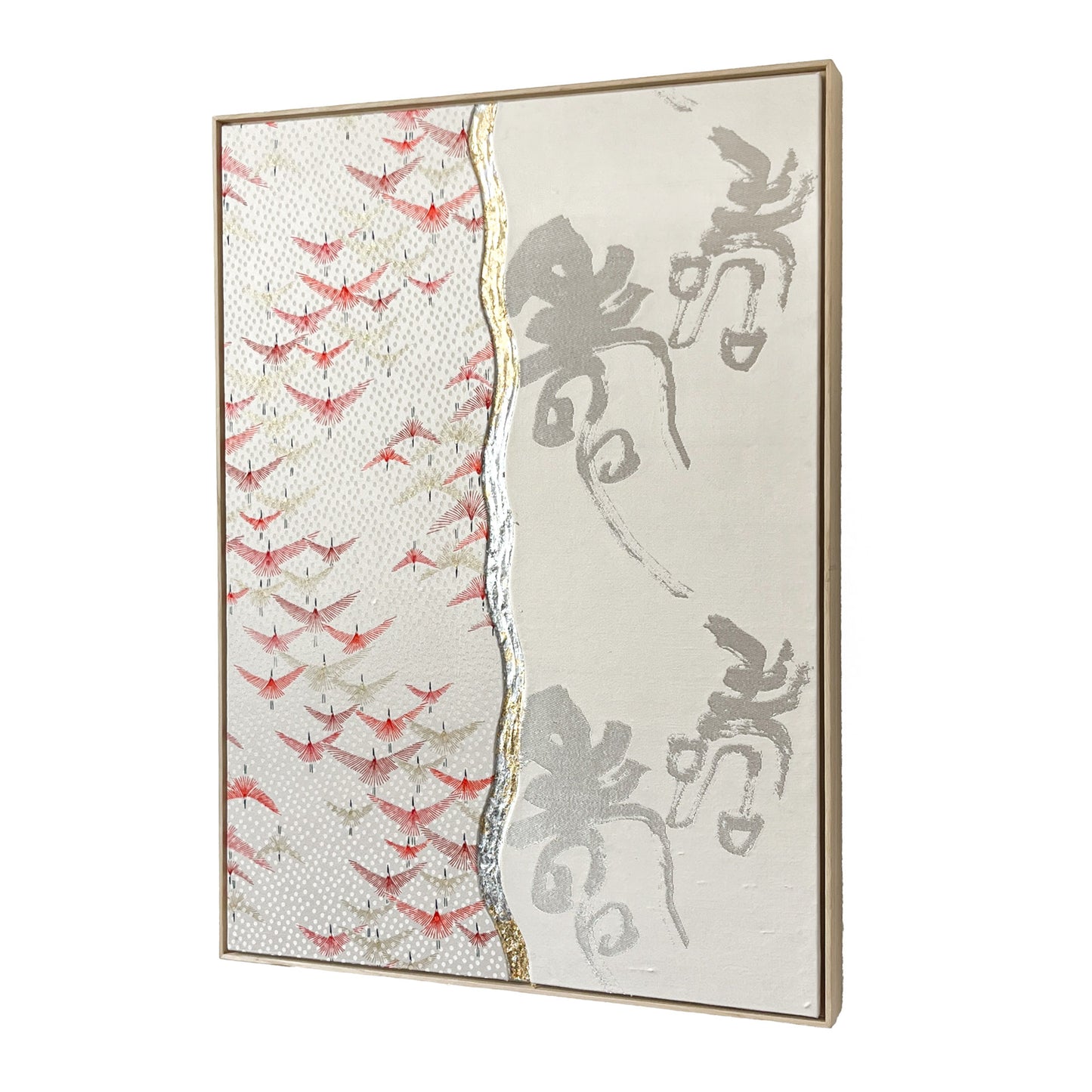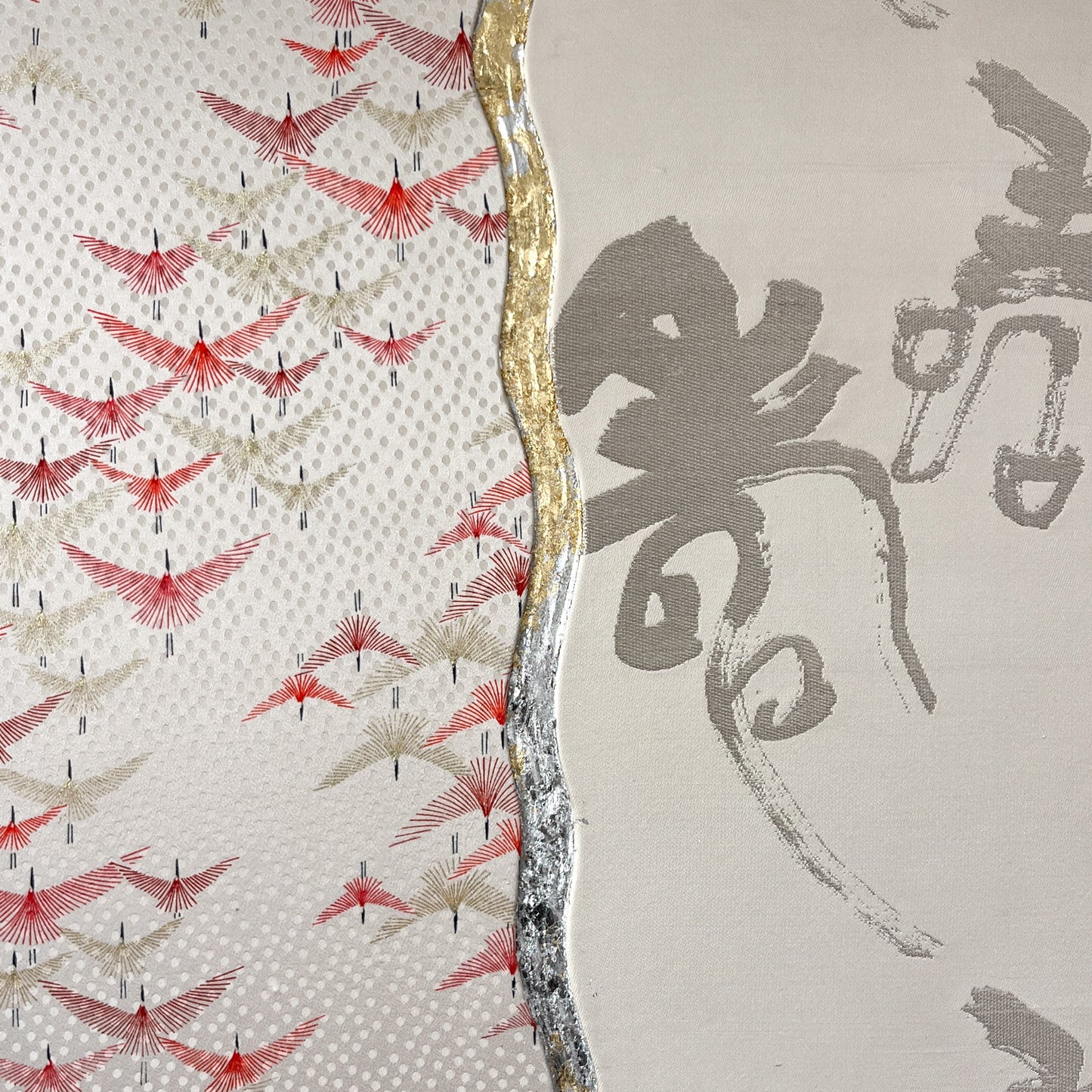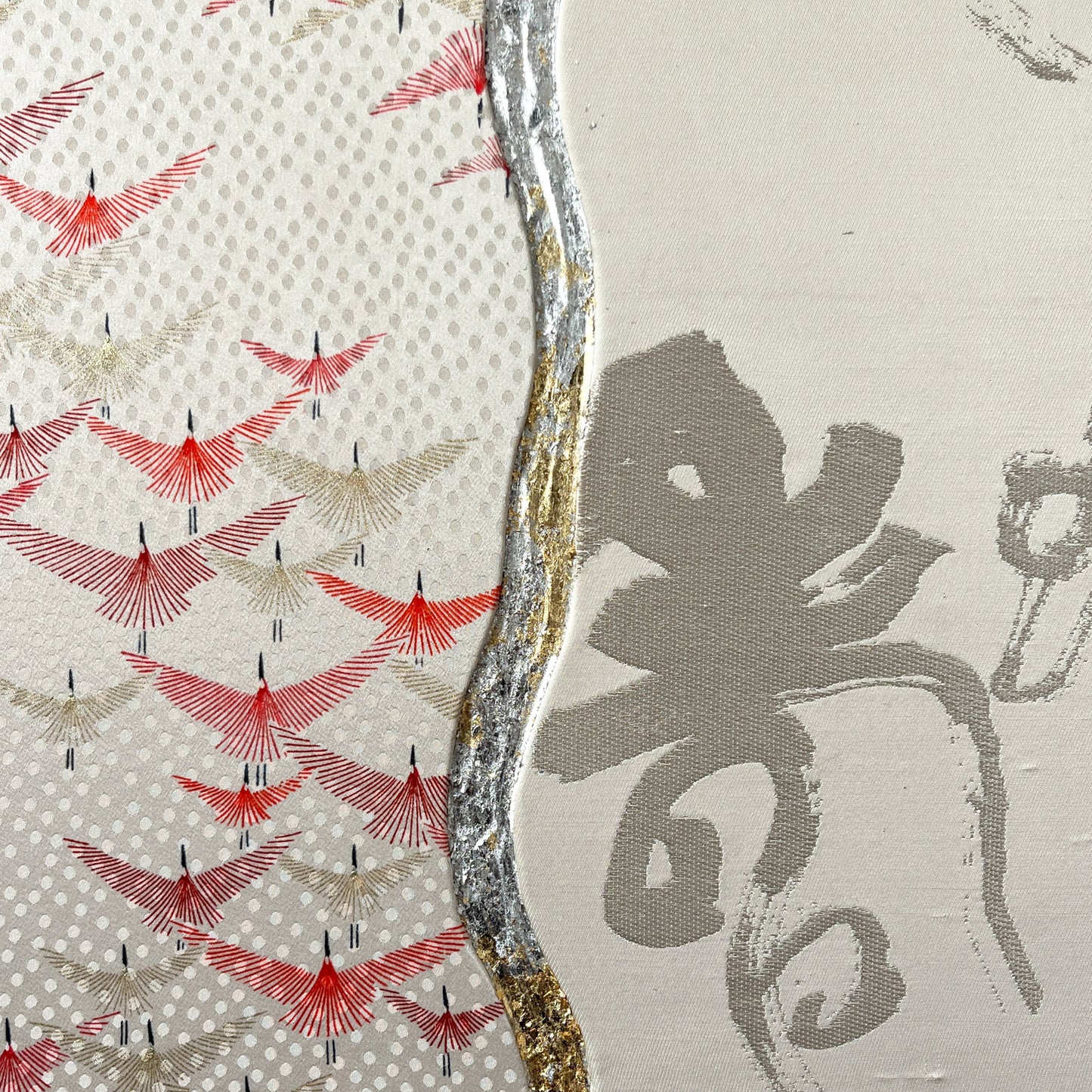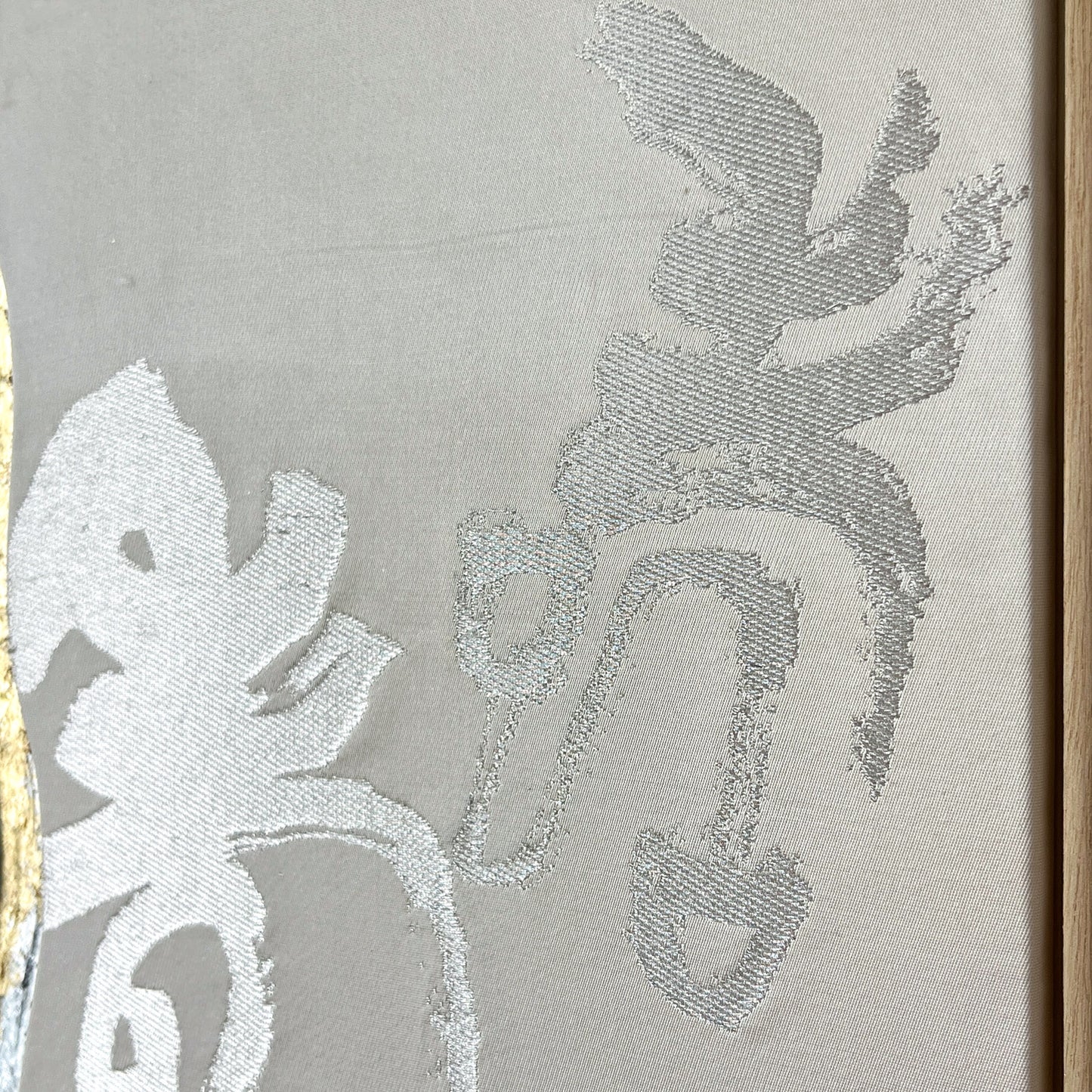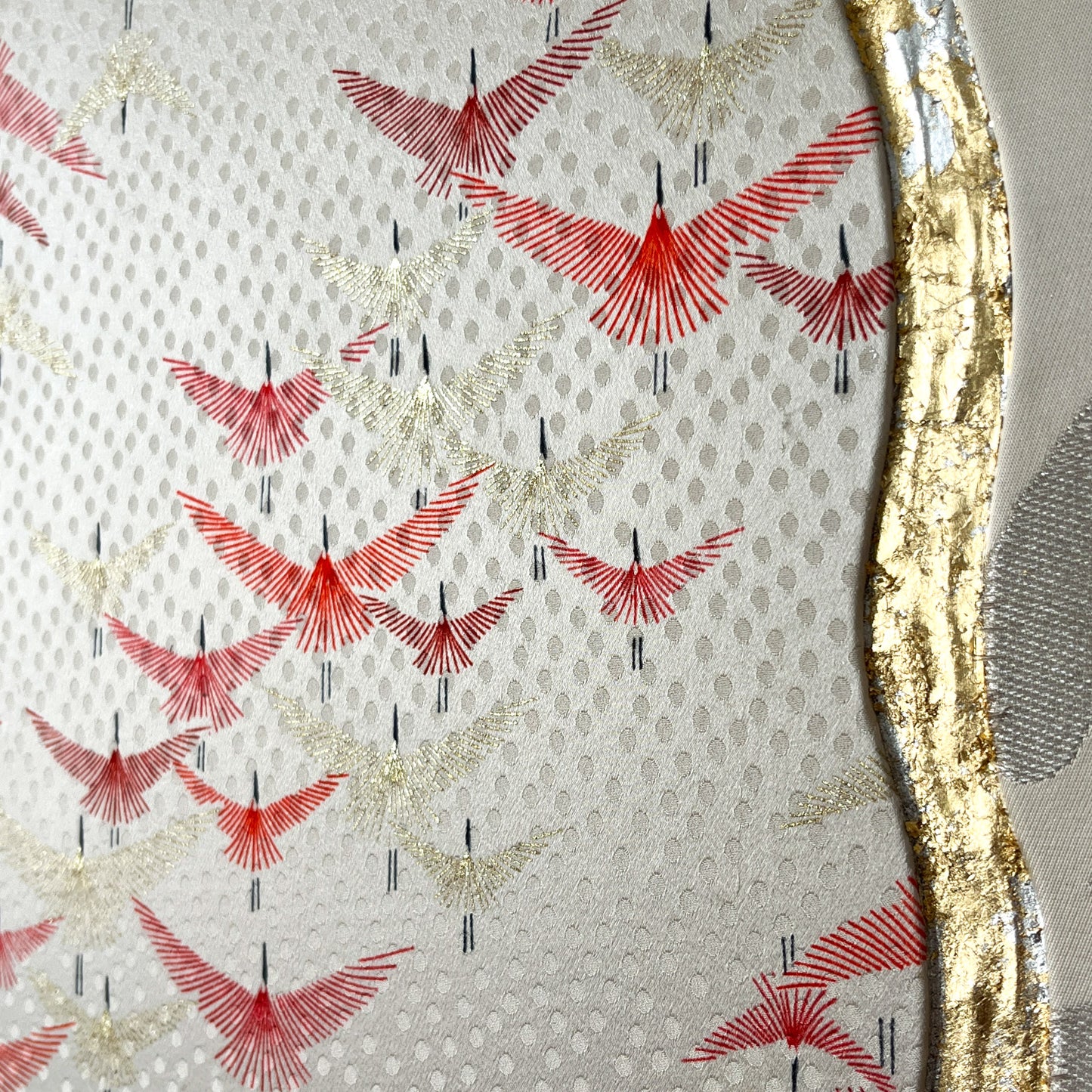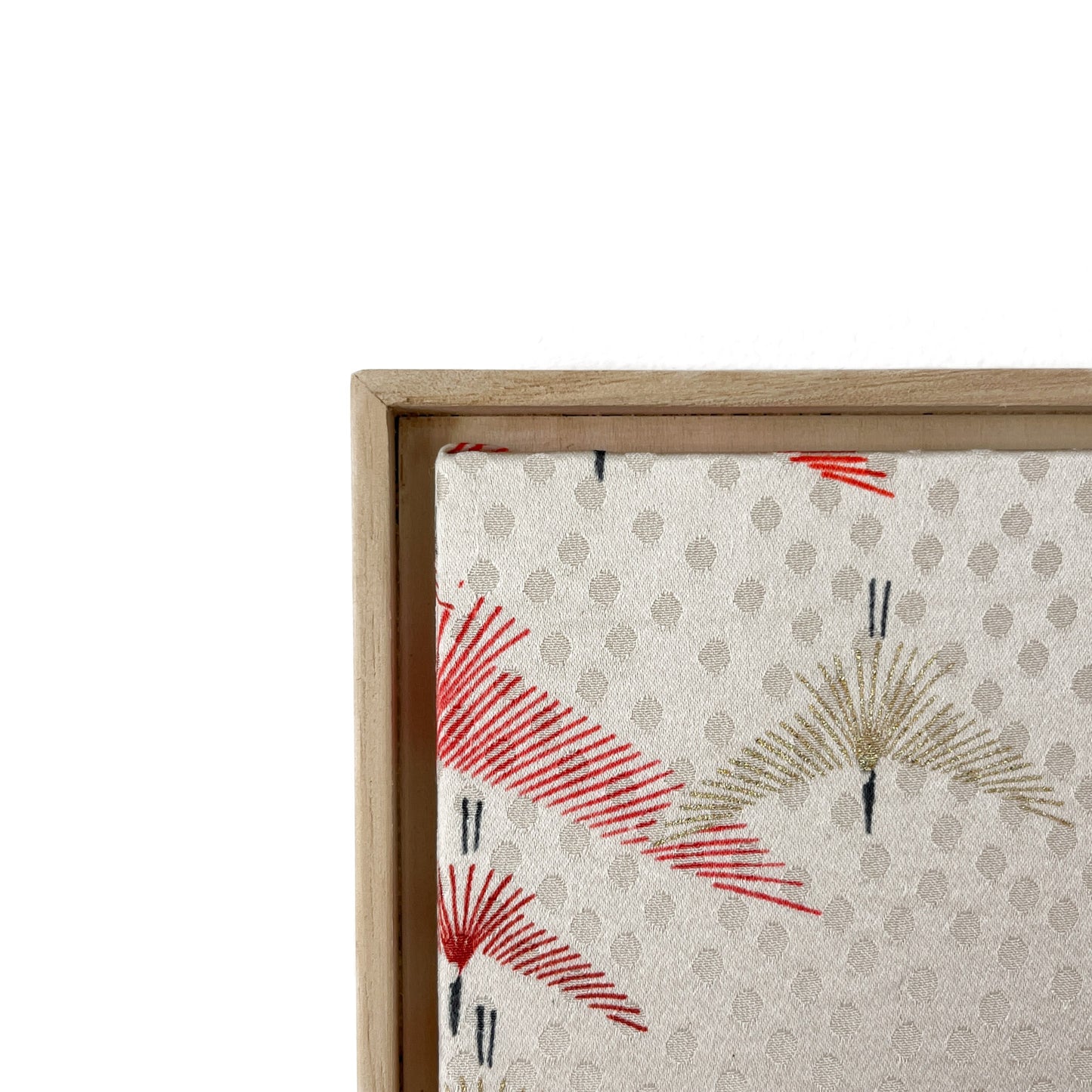Cranes ~Longevity~
Cranes ~Longevity~
無法載入取貨服務供應情況
Size
73cm x 53cm x 5cm
Materials
antique silk, silver leaf, golden leaf on paulownia wood
Edition
1/2
Story behind the work
This artwork uses antique kimono fabric with cranes - symbol of longevity on the left side, and vintage obi (sash for kimono) fabric with woven word “Longevity” on the right, to express the wish for long life to its owner.
The piece uses the traditional Japanese concept of "kintsugi" - it "unites" the pieces of antique obi back together with silver leaf to give it a second wind as art work.
“Kintsugi” is a concept of wabi-sabi, which values imperfection, impermanence, and the beauty of aging. Just as uniting broken cup in pottery, kintsugi line re-unites "broken" kimono to give it second life.
Period
The artwork uses vintage obi textile, around 1960ies, and antique kimono textile, around 1930ies.
Meaning of patterns and colors
In Japanese culture, cranes are among the most revered symbols, representing longevity, fidelity, and transcendence. Their graceful form and serene movements embody elegance and spiritual strength.
For centuries, cranes have appeared in kimono textiles, poetry, and painting as messengers of peace and good fortune - believed to live a thousand years and to carry prayers to the heavens.
A pair of cranes often signifies eternal partnership, as they pair for life in nature, while a lone crane in flight suggests freedom of the spirit and the timeless connection between the earthly and the divine.
When depicted on kimono fabric, the crane becomes more than a motif: it is a wish woven into cloth, a silent prayer for beauty that endures beyond the passing of time.
The theme of longevity is emphasized by a character "寿" - meaning "Longevity", woven into fabric on the right.
About the Material
The fabric uses traditional Japanese techniques of weaving and printing, where printing patterns are first carved on wood.
About the Frame
The frame is hand-crafted by Japanese artisan, from sustainable wood taken from "kiritansu".
Kiritansu - chest-of-drawers for kimono, is traditionally made from paulownia wood, a uniquely Japanese material closely tied to the world of kimonos.
Paulownia wood is known as the lightest wood in Japan, praised for its natural luster, resistance to moisture, and resilience against cracking. Since ancient times, it has been used in crafting furniture, chests, and musical instruments.
During the Edo period (17th cent.), it became customary to store cherished kimonos in paulownia chests, which offered fire resistance and protection from moisture and insects.
Traditionally, when a daughter was born, a paulownia tree would be planted. Upon her marriage, the tree would be cut down, and the wood would be used to craft a chest for her as a wedding gift.
Following the Ansei Earthquake during the late Edo period in 1855, paulownia chests gained popularity due to their ability to withstand fires and even float in water, thereby safeguarding their contents during floods.
I use antique kiritansu that can’t be used as furniture anymore to create basis and frames for my works. It adds them even more authentic atmosphere of traditional wabi-sabi spirit. Can you feel it?
Decoration Advice
Hanging on a wall requires picture rails, hooks, tacks or nails. It can also be displayed propped up on an easel. Ideal for a room makeover, housewarming gift, present, or souvenir for a loved one.
Precaution
All the works are made from real kimonos, antiques and vintages. For this reason, the fabric may have traces of long-term use and minor fabric damages. In case there are any scratches or stains, we always add a photo of the area on the item page, so please check before purchasing. Regarding precaution, cancellation and refund policy, please refer to the refund policy in the footer section of the site for information.

